Boats long plied the waters of the Saginaw River and its tributaries, carrying people and goods from one village to another, but when boats with gasoline engines were introduced in the early 1900’s, interest in recreational boating soared.
And Saginaw members of The Saginaw Merchant and Manufacturers Association saw an opportunity. They pursued the Valley Boat & Engine Company of Baldwinsville, New York, and in 1911, the company relocated to Saginaw.
Valley Boat and Engine Company set up headquarters on four acres at the foot of Hess and River Streets on the east side of the river.
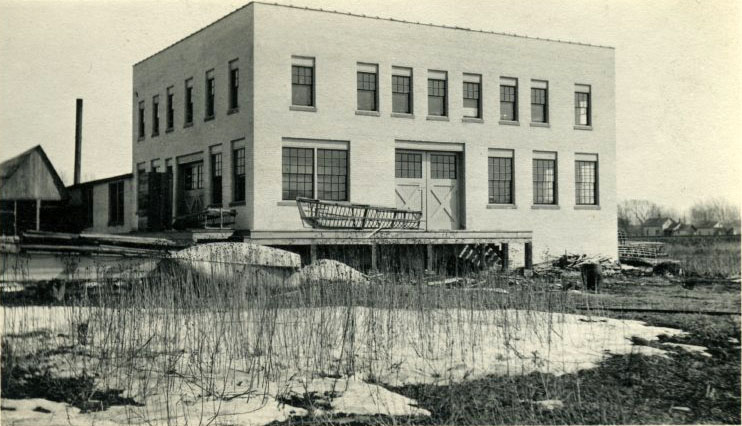
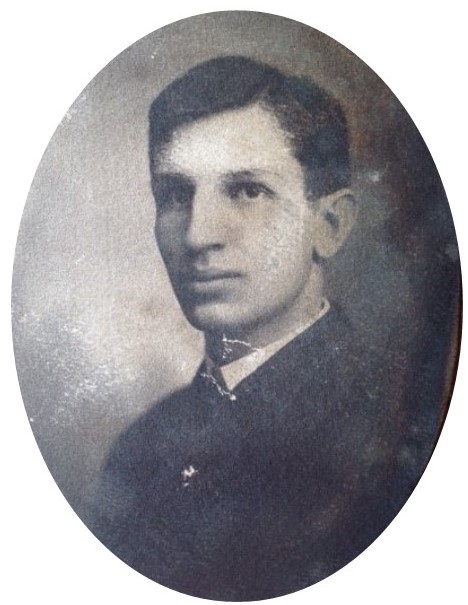 Newell Barnard, whose family had been in the lumber business, became president of the company at the young age of 30. His wife Ethel’s brother, Andre Lockwood, served as the company’s vice president.
Newell Barnard, whose family had been in the lumber business, became president of the company at the young age of 30. His wife Ethel’s brother, Andre Lockwood, served as the company’s vice president.
Newell steered the company to success. Valley Boat and Engine Company employed “forty expert mechanics,” according the magazine Naval Architects, which added, “The boats constructed by this firm are first-class in every respect and are built for service whether they are speed boats, family launches, or cruisers. They are built on ‘honor’ and comfort, satisfaction and durability are assured.”
Indeed, the company built a range of boats, from 15 to 20 foot open launches to larger cruisers up to 55 feet in length. It also sold patterns complete with instructions for do-it-yourself amateur boat builders to build their own.
Ads from Motor Boat magazine, in 1915 at left and 1912 at top right, and photos from Naval Architects, circa 1914, at bottom right show a sampling of the company’s offerings.
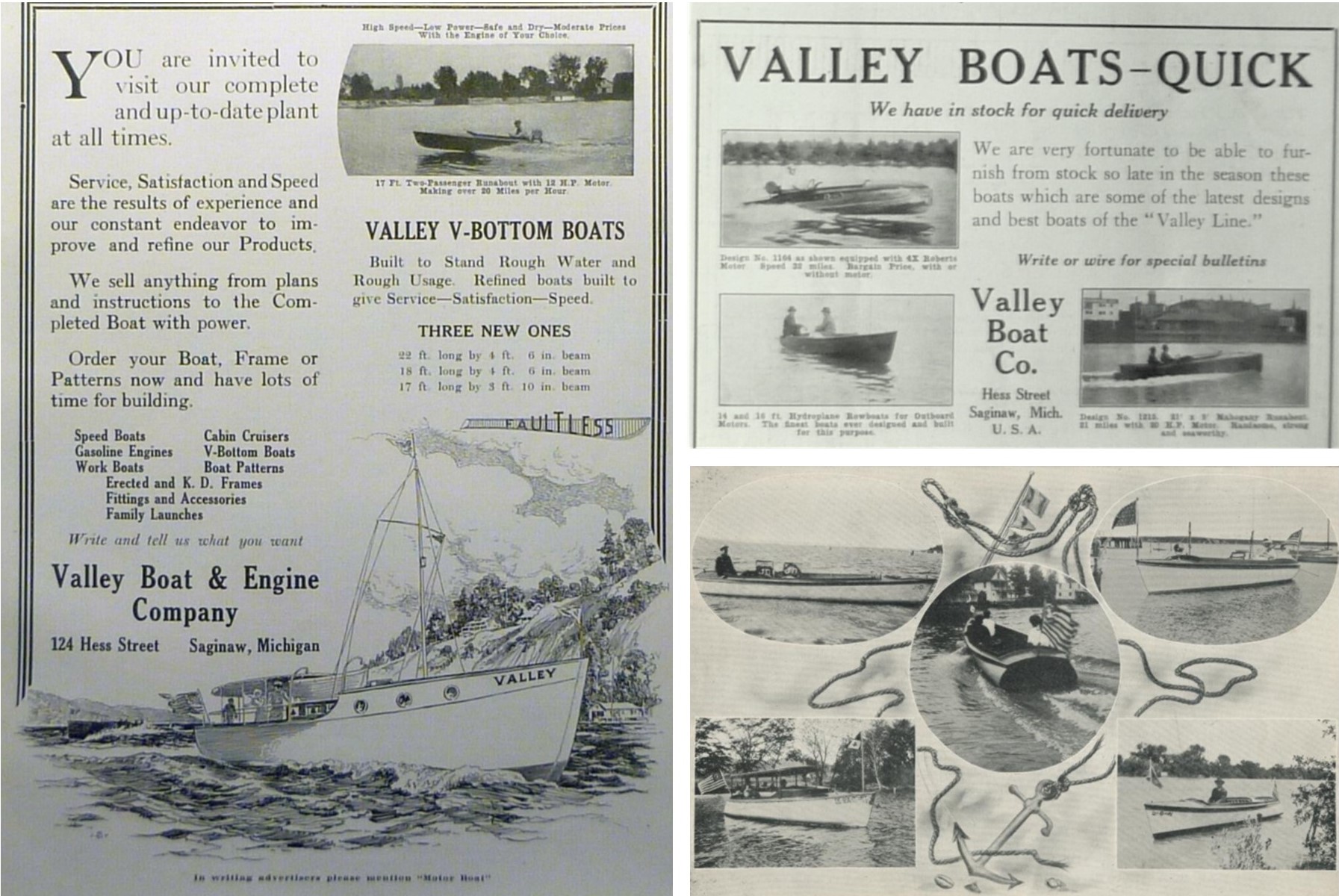
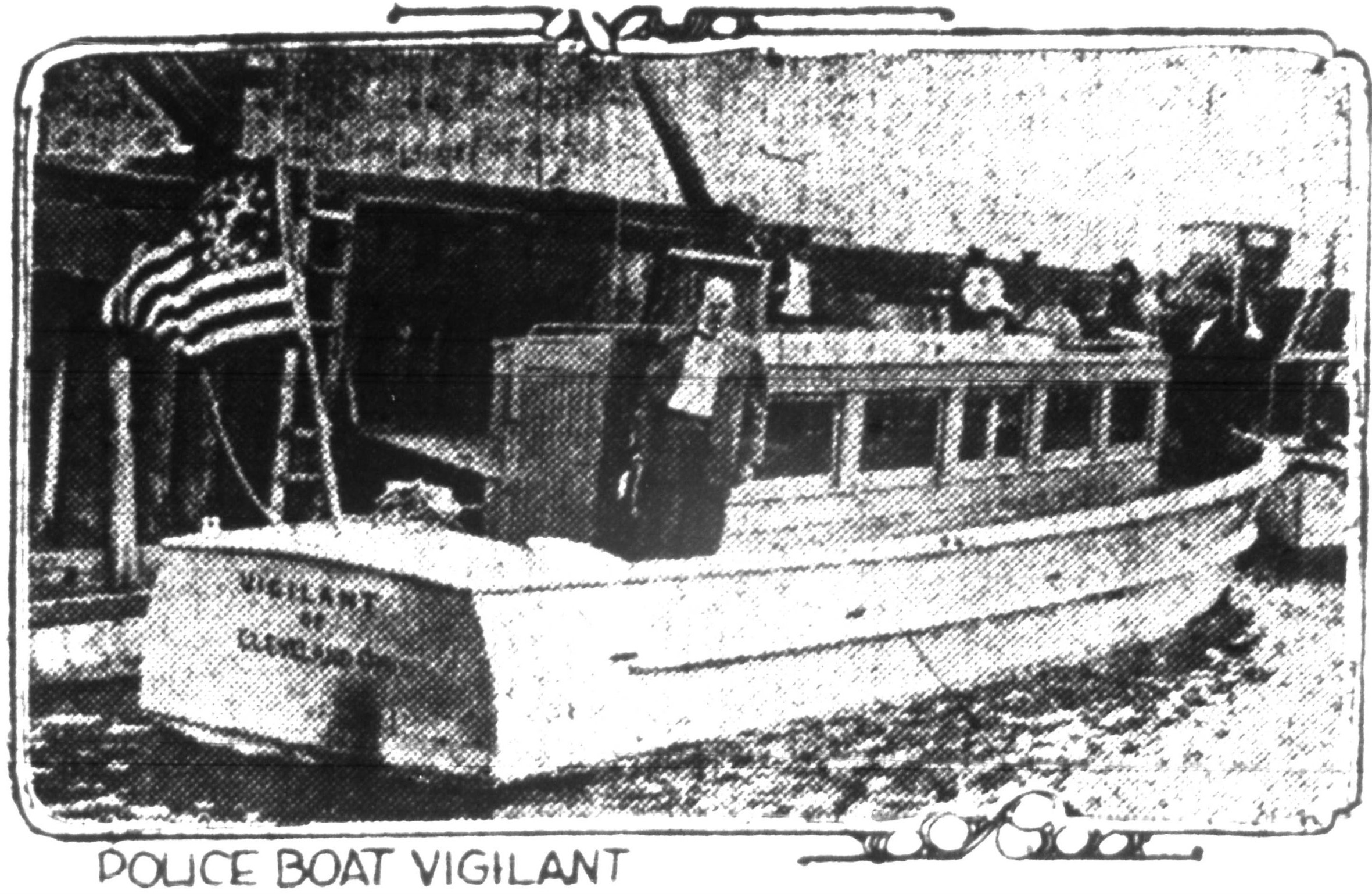 The company also built work boats. In 1914, the City of Cleveland contracted with Valley Boat and Engine Company to build a 38-foot police boat at a cost of $2,500. In just a few months, The Vigilant arrived and was put into service.
The company also built work boats. In 1914, the City of Cleveland contracted with Valley Boat and Engine Company to build a 38-foot police boat at a cost of $2,500. In just a few months, The Vigilant arrived and was put into service.
In and around the Midwest, Newell Barnard competed in many inboard boat races, and on a Valley Boat, he held the speed record for a couple of years during the teens: thus the reference to “Record Run” on the mural.
A mechanical engineer by training, Newell also dreamed of building cars, and he succeeded when the company introduced the cyclecar in 1914, but it was the only year they were ever made – about 35 in all. Fortunately, one survived and is displayed in all its restored glory in the Castle Museum in Saginaw.
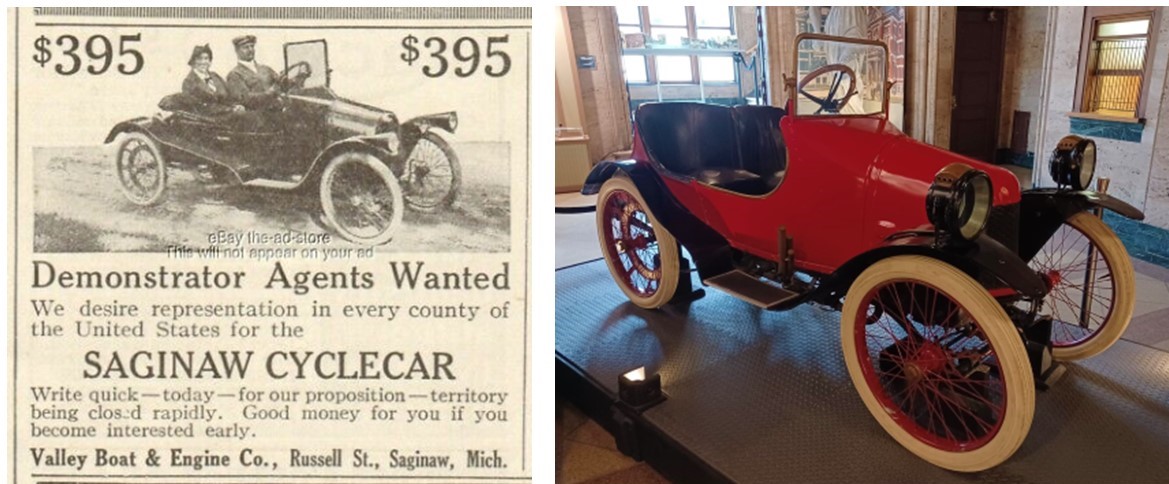
1914 was the very year that World War I broke out in Europe. Although the U.S. didn’t enter the war until April 1917, its impact diminished the demand for pleasure boats.
Valley Boat and Engine Co. filed notice of dissolution in 1915 but incorporated the same day as Valley Boat Company with Newell Barnard remaining as president, but the company never really took off again.
He sold his shares to his brother-in-law Andre Lockwood in 1919, and the company officially dissolved in 1924. Newell then put his engineering skills to use in the heating business.
Newell passed away in 1964. His grandson, Tom Germain, with whom we own the building on which the mural is painted, was a young boy but remembers that “he taught me a lot about how to fix things.”
The mural recognizes Newell Barnard’s ingenuity and Saginaw’s boatbuilding heyday, one of many of Saginaw’s proud achievements.
It’s located at the North Michigan Avenue entrance to the alley between the P.C. Andre buildings at 110-112 North Michigan and the one on the corner of Court Street and North Michigan, and is on the former – a building which was built by Newell’s wife Ethel’s grandfather, P. C. Andre. Saginaw artist Jim Fives painted the mural as well as the one on the opposite side of the alley.
- Betsy de Parry, VP, Sales and Marketing
